#*first century C.E not 1 C.E
Explore tagged Tumblr posts
Text
You ever be totally immersed in a story and then you come across a line about a subject and you realize you know more about this subject than the author and what the author wrote down was completely wrong and it's not even that the author didn't do research so much as the author didn't even think this was something that even needed to be researched? And it drives you absolute cuckoo bananas?
#pretty sure vellum is pretty flame resistant since it's leather and not paper#why are you doing this to me Phong Nguyen#also I'm less clear on this point I'll have to look up the history of manuscripts but did first century Vietnam even have vellum books?#like Asia had access to tree paper well before Europe did i think parchment and vellum were European in nature#after the decline of the papyrus trade following the collapse of the Roman empire#and needing something that was more durable in wetter climates than the Mediterranean anyway#i know europe got tree paper from China (possibly via Türkiye? idr) but i don't know if europe exported vellum and parchment#given the advent of tree fiber paper in Asia it doesn't seem like there'd be much need for vellum manuscripts in 1 C.E Vietnam#*first century C.E not 1 C.E#wait a minute#did EUROPE even have vellum by First Century C.E??#i.. i have to go look this up now wtf...
59 notes
·
View notes
Text
"In the 1750s, an Italian farmer digging a well stumbled upon a lavish villa in the ruins of Herculaneum. Inside was a sprawling library with hundreds of scrolls, untouched since Mount Vesuvius’ eruption in 79 C.E. Some of them were still neatly tucked away on the shelves.
This staggering discovery was the only complete library from antiquity ever found. But when 18th-century scholars tried to unroll the charred papyrus, the scrolls crumbled to pieces. They became resigned to the fact that the text hidden inside wouldn’t be revealed during their lifetimes.
In recent years, however, researchers realized that they were living in the generation that would finally solve the puzzle. Using artificial intelligence, they’ve developed methods to peer inside the Herculaneum scrolls without damaging them, revealing short passages of ancient text.
This month, researchers announced a new breakthrough. While analyzing a scroll known as PHerc. 172, they determined its title: On Vices. Based on other works, they think the full title is On Vices and Their Opposite Virtues and in Whom They Are and About What.
“We are thrilled to share that the written title of this scroll has been recovered from deep inside its carbonized folds of papyrus,” the Vesuvius Challenge, which is leading efforts to decipher the scrolls, says in a statement. “This is the first time the title of a still-rolled Herculaneum scroll has ever been recovered noninvasively.”
On Vices was written by Philodemus, a Greek philosopher who lived in Herculaneum more than a century before Vesuvius’ eruption. Born around 110 B.C.E., Philodemus studied at a school in Athens founded several centuries earlier by the influential philosopher Epicurus, who believed in achieving happiness by pursuing certain specific forms of pleasure.
“This will be a great opportunity to learn more about Philodemus’ ethical views and to get a better view of the On Vices as a whole,” Michael McOsker, a papyrologist at University College London who is working with the Vesuvius Challenge, tells CNN’s Catherine Nicholls.
When it launched in 2023, the Vesuvius Challenge offered more than $1 million in prize money to citizen scientists around the world who could use A.I. to help decipher scans of the Herculaneum scrolls.
Spearheaded by Brent Seales, a computer scientist at the University of Kentucky, the team scanned several of the scrolls and uploaded the data for anyone to use. To earn the prize money, participants competed to be the first to reach a series of milestones.
Reading the papyrus involves solving several difficult problems. After the rolled-up scrolls are scanned, their many layers need to be separated out and flattened into two-dimensional segments. At that point, the carbon-based ink usually isn’t visible in the scans, so machine-learning models are necessary to identify the inked sections.
In late 2023, a computer science student revealed the first word on an unopened scroll: “porphyras,” an ancient Greek term for “purple.” Months later, participants worked out 2,000 characters of text, which discussed pleasures such as music and food.
But PHerc. 172 is different from these earlier scrolls. When researchers scanned it last summer, they realized that some of the ink was visible in the images. They aren’t sure why this scroll is so much more legible, though they hypothesize it’s because the ink contains a denser contaminant such as lead, according to the University of Oxford’s Bodleian Libraries, which houses the scroll.
In early May, the Vesuvius Challenge announced that contestants Marcel Roth and Micha Nowak, computer scientists at Germany’s University of Würzburg, would receive $60,000 for deciphering the title. Sean Johnson, a researcher with the Vesuvius Challenge, had independently identified the title around the same time.
Researchers are anticipating many more breakthroughs on the horizon. In the past three months alone, they’ve already scanned dozens of new scrolls.
“The pace is ramping up very quickly,” McOsker tells the Guardian’s Ian Sample. “All of the technological progress that’s been made on this has been in the last three to five years—and on the timescales of classicists, that’s unbelievable.”"
-via Smithsonian, May 16, 2025
#I've been following this project for a couple of years now it's honestly super exciting#we are going to read scrolls that were charred shut in antiquity!!! that people thought could never be read#because they could never be unrolled#no one was read these words in 2000 years!!!!#until now!!!!!#archeology#ai#herculaneum#pompeii#vesuvius#citizen science#classics#classical studies#classical literature#ancient rome#artificial intelligence#roman history#ancient history#philosophy#epicurus#epicurean#good news#hope
602 notes
·
View notes
Text




my sapphic tbr🤍 pt. 1
1. Ink Vine, Elizabeth Broadbent:
Stay the hell out of the swamp — the backwater town of Lower Congaree recites it like an eleventh commandment. But when exotic dancer Emmy Joiner sneaks under the dark tree-canopy behind her family trailer, she meets mysterious, tattooed Zara, the first girl she dares to kiss.
But the small-town South hates a woman who dares to dance instead of plucking chickens for minimum wage, and as Emmy’s life falls apart, her relationship with Zara grows more tangled and bizarre. Zara’s offering something beautiful. But while Emmy’s slowly strangling, its price may be more than she’s willing to pay.
Shifting between the green-bright cypress cathedral and the dreamland of a dance club, Broadbent’s unforgettably-voiced debut confronts the brutal realities of poverty in the South, with a sapphic tale both sultry and sinister, gritty and gothic.”
2. My Darling Dreadful Thing, Johanna Van Veen
“Roos Beckman has a spirit companion only she can see. Ruth―strange, corpse-like, and dead for centuries―is the light of Roos' life. That is, until the wealthy young widow Agnes Knoop visits one of Roos' backroom seances, and the two strike up a connection.
Soon, Roos is whisked away to the crumbling estate Agnes inherited upon the death of her husband, where an ill woman haunts the halls, strange smells drift through the air at night, and mysterious stone statues reside in the family chapel. Something dreadful festers in the manor, but still, the attraction between Roos and Agnes is undeniable.
Then, someone is murdered.
Poor, alone, and with a history of 'hysterics', Roos is the obvious culprit. With her sanity and innocence in question, she'll have to prove who―or what―is at fault or lose everything she holds dear.”
3. House of Hunger, Alexis Henderson
“A young woman is drawn into the upper echelons of a society where blood is power in this dark and enthralling Gothic novel from the author of The Year of the Witching.
Marion Shaw has been raised in the slums, where want and deprivation are all she know. Despite longing to leave the city and its miseries, she has no real hope of escape until the day she spots a peculiar listing in the newspaper seeking a bloodmaid.
Though she knows little about the far north—where wealthy nobles live in luxury and drink the blood of those in their service—Marion applies to the position. In a matter of days, she finds herself the newest bloodmaid at the notorious House of Hunger. There, Marion is swept into a world of dark debauchery. At the center of it all is Countess Lisavet.
The countess, who presides over this hedonistic court, is loved and feared in equal measure. She takes a special interest in Marion. Lisavet is magnetic, and Marion is eager to please her new mistress. But when she discovers that the ancient walls of the House of Hunger hide even older secrets, Marion is thrust into a vicious game of cat and mouse. She’ll need to learn the rules of her new home—and fast—or its halls will soon become her grave.”
4. Our Hideous Progeny, C.E. McGill
“Mary is the great-niece of Victor Frankenstein. She knows her great uncle disappeared under mysterious circumstances in the Arctic, but she doesn’t know why or how. . . .
The 1850s are a time of discovery, and London is ablaze with the latest scientific theories and debates, especially when a spectacular new exhibition of dinosaur sculptures opens at the Crystal Palace. Mary is keen to make her name in this world of science alongside her geologist husband, Henry—but despite her sharp mind and sharper tongue, without wealth and connections their options are limited.
When Mary discovers some old family papers that allude to the shocking truth behind her great-uncle’s past, she thinks she may have found the key to securing her and Henry’s professional and financial future. Their quest takes them to the wilds of Scotland; to Henry’s intriguing but reclusive sister, Maisie; and to a deadly chase with a rival who is out to steal their secret.”
30 notes
·
View notes
Text
The story of the first people begins in Genesis 2, when God creates Adam, the first human being. The first Adam is a very simple and uncultured being, so simple that in the quest to find Adam a "suitable companion," God creates the animals. At this early point in Adam's development, God can entertain the notion that the animals might be fit companions for the lone Adam. God brings each animal to Adam, and Adam takes notice of each and gives it a name. "But for Adam he didn't find a suitable companion." God then creates woman.
The nature of humanity changes drastically after the creation of Eve. In response to the serpent's revelation that eating the fruit of the tree of knowledge would make her more godlike, she eats, and by doing so she acquires the knowledge of things—cultural knowledge. In this way, Eve wrests knowledge from the realm of the divine, takes the first step towards culture, and transforms human existence. The coming of knowledge is stated very simply: “the eyes of both of them were opened and they perceived that they were naked, and they sewed together fig leaves and made themselves loincloths.” Two things have happened: not only have Adam and Eve realized that they are naked, a category they had not perceived in their childlike innocence, but, in addition, they are now able to sew themselves loincloths out of the available fig leaves. Somehow, the knowledge of this skill of sewing, the beginnings of cultural knowledge, has come with the eating of the fruit of the knowledge of all things. The "natural" state of humankind's Edenic beginnings has disappeared: humans become creatures of culture, able to make creations of their own. They leave the garden and embark on their cultural existence.
The implications of Eve's act are enormous. In a bite, she has “stolen” cultural knowledge, taking it from the sacred realm and bringing it to humankind. Almost immediately, Adam and Eve have to leave the garden of Eden: human beings leave their liminal infancy and enter the world of human reality. God then ratifies this change in their existence, and formally recognizes that they have left the animal world by providing them clothes made out of animal skins.
This story has a long history of interpretation in post-biblical Western tradition, which concentrated on the sin of disobeying God. Early post-biblical literature does not focus on this story as an account of the origin of sin, which it derives from the story of the marriage of the angels to human women, a post-Biblical elaboration of Genesis 6:1-4. From the first century B.C.E. on, the exegetical tradition sees sin originating in the Paradise story, and by the first century C.E. on, Eve is blamed for this fall. Eve is seen as the first yielder to temptation, the one who brought sin and evil into the world.
Western writers since Origen have often associated Eve with the Greek myth of Pandora, the first woman, who unleashes misfortune on humankind when she opens the forbidden box. She is, however, better compared to Prometheus, who disobeyed the gods and brought culture (in the form of fire) to humanity. Like Prometheus, Eve acts on her own initiative; like Prometheus, she transforms human existence: and, like Prometheus, she suffers as the result of her gift to humanity. However—unlike Prometheus—Eve, the Bible's first culture bearer, is human. And she is female. This depiction of Eve as culture hero has an inner coherence and logic to it, for Eve's role in this primeval scene is the woman's role in the life of human beings, and that of the goddesses of the ancient Sumerian pantheon. The goddesses are figures of culture and wisdom just as women are the first teachers of cultured existence, the transformers of raw into edible, grass into baskets, fleece and flax into yarn and linen and then into clothes, and babies into social beings. They are the mediators of nature and culture in daily life, and Eve the first woman is the first transformer who begins the change from "natural" simple human beings into cultural humanity.
-Tikva Frymer-Kensky, In the Wake of the Goddesses: Women, Culture, and the Biblical Transformation of Pagan Myth
79 notes
·
View notes
Text
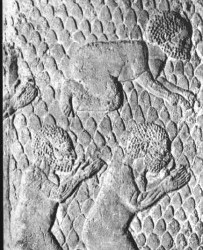
Ancient Hebrews of Lachish
Introduction: According to the standard Jewish Encyclopaedia 96% of all the Jews known to the world today are the descendants of the Khazar tribes of Russia, eastern Europe and western Mongolia; these are the Ashkenazi Jews, the other major sect of the Jews are the Sephardic jews, and they are a bastard people from the mixing of the Canaanites, Hittites, Amorites, Perizzites, Hivites, Jebusites, Girgashites, Kenites, Edomites and some true Israelites. the Jews have never been Isrealites; they are not Israelites now; and they will never be Israelites.
Encyclopedia Americana (1985):
“Ashkenazim, the Ashkenazim are the Jews whose ancestors lived in German lands…it was among Ashkenazi Jews that the idea of political Zionism emerged, leading ultimately to the establishment of the state of Israel…In the late 1960s, Ashkenazi Jews numbered some 11 million, about 84 percent of the world Jewish population.”
The Jewish Encyclopedia:
“Khazars, a non-Semitic, Asiatic, Mongolian tribal nation who emigrated into Eastern Europe about the first century, who were converted as an entire nation to Judaism in the seventh century by the expanding Russian nation which absorbed the entire Khazar population, and who account for the presence in Eastern Europe of the great numbers of Yiddish speaking Jews in Russia, Poland, Lithuania, Galatia, Besserabia and Rumania.”Khazar: Ashkenazi Modern Jew
The Encyclopedia Judaica (1972): The Universal Jewish Encyclopedia: The Universal Jewish Encyclopedia:
“Khazars, a national group of general Turkic type, independent and sovereign in Eastern Europe between the seventh and tenth centuries C.E. During part of this time the leading Khazars professed Judaism…In spite of the negligible information of an archaeological nature, the presence of Jewish groups and the impact of Jewish ideas in Eastern Europe are considerable during the Middle Ages. Groups have been mentioned as migrating to Central Europe from the East often have been referred to as Khazars, thus making it impossible to overlook the possibility that they originated from within the former Khazar Empire.”
The Universal Jewish Encyclopedia:
“The primary meaning of Ashkenaz and Ashkenazim in Hebrew is Germany and Germans. This may be due to the fact that the home of the ancient ancestors of the Germans is Media, which is the Biblical Ashkenaz…Krauss is of the opinion that in the early medieval ages the Khazars were sometimes referred to as Ashkenazim…About 92 percent of all Jews or approximately 14,500,000 are Ashkenazim.”
The Bible: Relates that the Khazar (Ashkenaz) Jews were/are the sons of Japheth not Shem:
“Now these are the generations of the sons of Noah, Shem, Ham, and Japheth: and unto them were sons born after the flood. The sons of Japheth;…the sons of Gomer; Ashkenaz…” (Genesis 10:1-3)
New Standard Jewish Encyclopedia, page 179,[GCP pg 68]
“ASHKENAZI, ASHKENAZIM…constituted before 1963 some nine?tenths of the Jewish people (about 15,000,000 out of 16,5000,000)[ As of 1968 it is believed by some Jewish authorities to be closer to 100%]”
The Outline of History: H. G. Wells,
“It is highly probable that the bulk of the Jew’s ancestors ‘never’ lived in Palestine ‘at all,’ which witnesses the power of historical assertion over fact.”Ancient Hebrews
Under the heading of “A brief History of the Terms for Jew” in the 1980 Jewish Almanac is the following: “Strictly speaking it is incorrect to call an Ancient Israelite a ‘Jew’ or to call a contemporary Jew an Israelite or a Hebrew.” (1980 Jewish Almanac, p. 3).
By
The Bishop
Spread the love
6 notes
·
View notes
Text
The contradiction between zero indexing and one indexing is a common problem that has irritated mankind for a long time. Different cultures, languages, and scenarios lead to one being more intuitive than the others, and you can easily run into contradictions and off-by-one errors.
The english word 'first' means 'nothing before it. So, descriptively, the 'first century of the common era' would be the years 1 C.E. through 100 C.E., as these are the first hundred years of the common era (there is no year 0 by common reckoning). The 'second century' would be the years 101 through 200. And the third would be 201-300.
This pattern, while understandable when starting at the beginning, leads to issues when one tries to take the intuitive shortcut of dividing a year by 100 and rounding down. So, one might mistakenly consider the year 1990 to be part of the 19th century, when it is actually part of the 20th century, as there were 19 full centuries before it.
This in turn leads to the even more prevalent erroneous 'correction' where the century comes from erasing the last two digits of a year and adding one. By that reckoning, the year 1700 is part of the 18th century. Rather, the year 1700 is the final year of the 17th century. December 31, 1700 was the final day in which there were 16 full centuries before it within the common era, so it is demarcated as the 17th century, not the 18th. Just the year 2000 was part of the second millenia (of the common era), not the third, while the year 2001 was the first year of the third millenia.
People who are aware of the first issue will often fall prey to the second. And the situation remains frustrating for people who do know the match always having to double check themselves.
People in the early twenty-first century DO know all of this (though they might have forgotten about the 1700 = seventeenth century thing since it is much less frequent), but they are likely to be annoyed by it. Using zero indexing instead would allow people to say Century 19 to refer to the years starting with 19, but people would not be interested in changing the language, and there is still the issue with the lack of a year zero, meaning century zero would only have 99 years in it.
i hate hate hate that the “NINEteenth century” is talking about the EIGHTEEN hundreds. i know why this happens mathematically and stuff. but isn’t it just so fucked up? doesn’t it feel so wrong? dont you have to fight with your brain to reconcile the difference? is this not a sign of humanity’s eternal despair?
#period novel details#there should be a year 0#and we should choose something else to count on as our year zero instead of religion#it is annoying but any other solution would be just as annoying if not worse#adding one in your head keeps you humble
31K notes
·
View notes
Text
How Accurately Could Early (622-900 C.E.) Muslims Determine the Direction of Prayers (Qibla)?
by Walter R. Schumm
svdsmw
1. Background
Architecture is closely tied to religion, even in our modern age (De Wildt et al. 2019). For thousands of years, faithful Sunni Muslims have dutifully prayed toward the holy city of Mecca five times a day (Shia, three times a day). Ilci et al. (2018) have reported that “Facing towards the qibla … is one of the six conditions or requisites of the prayer for being valid. In other words, if a person does not turn his/her face to the qibla direction within an acceptable declination, his/her prayer is invalid according to scholarly consensus” (p. 1642). However, could early Muslims in the first two or three centuries of Islam accurately determine the qibla? Brubaker (2019, p. 17) has mentioned the work of Dan Gibson, who claims that Mecca was not the original holy city of Islam, although Brubaker does not take a firm position on that claim. However, Petersen (1996) has stated that “Many early mosques were not built to a correct qibla orientation …” (p. 240). King (1990) acknowledges that many early mosques did not face toward Mecca, the city (p. 246). That might imply that qiblas were not able to be measured accurately, which is an empirical rather than philosophical question, a question that can be investigated scientifically. The point of contention is not that some early mosques do not appear to point toward the city of Mecca (most scholars seem to agree on that) but on how to explain that issue, especially with respect to technological limitations at that earlier time.
As Brubaker (2019) noted, Dan Gibson (2011, 2017) has created considerable controversy over his claim that “Islam’s first Holy City was Petra, not Mecca” (Lecker 2014, p. 465). Oakes (2015), after reviewing Gibson (2011), invites a response to Gibson, saying “Gibson’s evidence is just begging for a response” (p. 426), echoing Waugh’s (2012, p. 201) similar earlier comment that the qiblas of the earliest mosques did not seem to consistently face Mecca, an issue “which surely begs for explanation”. Indeed, there have been responses to Gibson and to earlier scholars who also argued against Mecca as the first holy city. Countering such assertions are many others (Saifullah et al. 2001; King 1993). For example, Saifullah et al. (2001) argued that “A small, defiant, and largely discredited group of Orientalists have argued that the early mosques were not oriented toward Makkah … a theory that challenges the Muslim belief that the earliest mosques were directed toward the K’abah” (p. 1). Furthermore, Saifullah et al. (2001) argued that during the beginning of Islam “the tools for accurately determining the direction were not available at all” (p. 15). Later they claim that determining the qibla in early mosques was “as one can easily see, was only a rough guess” (p. 17). They conclude that “In the early centuries of Islam, Muslim[s] did not have tools to determine the qibla with precision” (p. 19). Similarly, Ilci et al. (2018) stated that “During the first two centuries of Islam, when mosques were being built in different geographic locations, Muslims did not have sufficient scientific background to find the direction of qibla” (p. 1643). For his part, David King (2018–2019) takes issue with Gibson’s ideas, noting in various places that Gibson is an “amateur” (p. 347) and his documents “non-scholarly” (p. 347). His work is “an insult to Muslim and Western scholarship” (p. 347). King claims that Gibson’s text (Gibson 2017) “is of the kind one would expect from a first-year college student” (p. 349). Rather, King argues that “Muslims for the first two centuries used folk astronomy, particularly astronomical horizon phenomena, the cardinal directions and solar risings and settings at the solstices; the reason they did this was because the Ka’ba itself is astronomically aligned and they wanted to face an edifice, the Ka’ba, not the town of Mecca” (p. 349). Furthermore, King has argued that “the earliest Muslims could never have aligned mosques accurately toward the modern direction of Petra, or, for that matter, toward the modern direction of Mecca either” (p. 351). More specifically, he argues that “the first generations of Muslims had no means whatsoever for finding the direction of Petra accurately to within a degree or two, not the least because they had no access to any geographical coordinates, let alone modern ones, and no mathematics whatsoever” (p. 354). In a different article, King (1990) argues that “In the first two centuries of Islam, when mosques were being built from Andalusia to Central Asia, the Muslims had no truly scientific means of finding the qibla” (p. 253). Anderson (2018) agrees, stating that “Hence, the only explanation for any early mosques accurately oriented toward either Petra or Mecca—if indeed any exist—is coincidence.” Instead, King argues that many mosques simply faced south or in some other direction (rising summer or setting winter sun) or tried to align with the axis of the Ka’ba. King concludes that we need to “identify the diverse ways that were used for finding the qibla in each location” (p. 361) and that Gibson’s ideas are “complete nonsense” (p. 363), even though “His followers will surely believe everything he writes” (p. 366). In another paper, King (2018) argues that Gibson “has no qualifications”, “no understanding”, “seems oblivious”, “has erred monumentally”, and has reached “false conclusions” (p. 9). Elsewhere, King (2018) has asserted that Gibson’s “crackpot theories” are “crazy and potentially dangerous” (p. 26).
I tend to become uneasy when I observe ad hominem attacks on scholars with whom one may differ, especially when a person is labeled “discredited” without specific evidence. However, good science (and history) depends on good measurement, sound reasoning, and effective statistical methodology. It is one thing to claim something, another entirely to provide systematic and scientific/statistical evidence for that claim. As Lecker (2014, p. 467) has noted, a qibla towards Petra might also be one directed towards Jerusalem, so the ability of architects in ancient Islam to determine their direction of prayer accurately enough to distinguish between nearby target cities remains an open question (King 1986). Ordinary lay persons might question the ability of ancients to be able to determine qiblas, or the directions of prayer to holy cities accurately, as they lacked so much of the technology available to us today. As noted, King, Anderson, and presumably many other scholars would agree.
Such controversies are occurring, of course, in a contentious background in which some political interests in the West have been ideologically attacking and denigrating Muslims and Islam, possibly out of fear and their own insecurities (Sharify-Funk 2013), a process with a long history (Firestone 2019; Ismail and Mat 2016). Naturally, Muslims resent such attacks and have vigorously analyzed them and defended against them (Bazian 2018; Haddad and Harb 2014; Khan et al. 2019; Larsson 2012; Mohammed 2018). Although some may see science and statistics as a tool of the oppressor who wants to merely “display” objectivity [falsely] (Khan et al. 2019, p. 7, point number 20), I prefer to see science and statistics as a way to at least partially control for bias and to improve objectivity if done well, even though I also recognize that research can be distorted to conform to political objectives (Schumm 2015; Schumm and Crawford 2020). In other words, I agree with Sharify-Funk (2013), who recognized that “critical examination is needed” (p. 465) when dealing with emotionally charged issues. The use of statistics is one way to critically examine arguments that can be discussed in terms of specific data points.
0 notes
Text
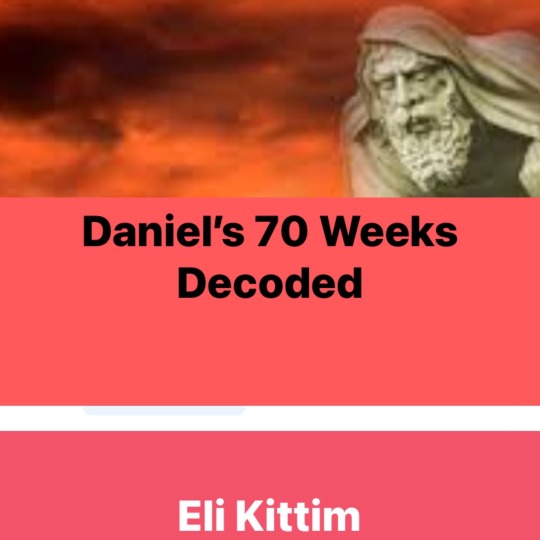
Daniel’s 70 Weeks Decoded
Eli Kittim
Daniel 9:24–26:
“Seventy weeks are determined for your people and your holy city, to finish the transgression, to make an end of sin, to make atonement for iniquity, to bring in everlasting righteousness, to seal up vision and prophecy, and to anoint the Most Holy Place. So you are to know and understand that from the going forth of the command to restore and build Jerusalem, until Messiah the Prince, there will be seven weeks and sixty-two weeks. … Then after the sixty-two weeks, the Messiah will be cut off and have nothing, and the people of the prince who is to come will destroy the city and the sanctuary.”
A common misconception is to assume that the starting point of this prophecy began after the Hebrews returned from the Babylonian exile in the 500s B.C.E. However, Daniel’s prophecy actually refers to the end of all visions and revelations, an end-time period that will in effect “seal up vision and prophecy” (Dan. 9:24). The fact that John of Patmos continued to furnish us with additional visions and revelations proves that the first century C.E. cannot possibly be the fulfillment of Daniel’s prophecy. John MacArthur, in describing Dan. 9:24, was once quoted as saying: “It’s got to be a final thing cause everything is a final. … Boy, that’s final stuff, isn’t it? The end, the finish, the seal, seal it up, close it up, that’s the way it is!” If it is “final stuff,” then the prophecy cannot possibly be referring to the time of Antiquity but rather to the time of the end! Notice that fulfillment of this prophecy requires the end of all transgression and sin, and the beginning of everlasting righteousness, which is reminiscent of the end-times in Rev 10:7 when “the mystery of God will be fulfilled.”
Isaac Newton—in his Observations Upon the Prophecies of Daniel (published 1733)—notes that we should not combine the seven and sixty two weeks as if they were one number. If the authorial intent was to impress upon us the notion that the numbers seven and sixty-two must be combined, using the same measurements, the author would have simply written sixty nine weeks. The fact that two sets of numbers are given in the text suggests that they are distinct. What is more—in stark contrast to the mainstream view—Newton also mentions in the aforesaid book that Daniel’s seventy weeks prophecy should not be confined to the time of Antiquity, but must be applicable to Christ’s eschatological coming. Just as in Rev 12:3-4 and verse 9 in which Satan’s final empire is contemporaneous with Christ—(i.e. “a great red dragon, with seven heads and ten horns … stood before the woman who was about to bear a child, so that he might devour her child as soon as it was born”)—so in Dan. 9:26 the two princes of Daniel’s prophecy are juxtaposed to suggest that they are contemporaries:
“After the sixty-two weeks, an anointed one shall be cut off and shall have nothing, and the troops of the prince who is to come shall destroy the city and the sanctuary.”
According to the text, there does not appear to be a two-thousand-year gap separating these two figures or events. Moreover, the Old Greek Daniel form of the Septuagint (LXX) says in Daniel 9:27, ἕως καιροῦ συντελείας, (i.e. “until the time of the end”; cf. Dan. 12:4 LXX), indicating that the context of this verse is clearly eschatological. The traditional Christian interpretation, however, breaks up the prophecy into two parts: one part fulfilled during the time of Antiquity, the other referring to the last week of the great tribulation. However, there is no indication of a long time-gap between these weeks.
Similar to Daniel’s 70 Weeks prophecy, Christ’s prophecy (in Matt. 24:34) is also about a future seventy-year generation. Jesus indicates that it will take one generation “until all these things take place” (Matt. 24:34; cf. 1 Thess. 4:15). But one generation from when? Answer: from the timing of the birth of the Messiah in the fullness of time (Gal. 4:4; Rev 12:5)! Astoundingly, Matthew’s gospel imparts a clue pertaining to the future birth of the Messiah that hardly anyone knows about. Specifically, the ancestry of Christ, as recorded in Matthew’s gospel, is actually a mathematical riddle whose solution reveals the precise year of his birth! The key to solving this puzzle can be found in chapter 1 and verse 17. Notice that there is a constant repetition of 14 generations throughout the foregoing lineage. We also know from Scripture that a generation is equal to 70 years (Ps. 90:10). One final clue: the calculation does not begin from the time of Abraham but from the time of David who alone represents the Messiah! So, let’s work out the calculation. Matthew tells us that there were 14 generations from David to Babylon. Each generation is equal to 70 years. Thus, 14 x 70 = 980 years from David to Babylon. And there were 14 generations from the exile to the Messiah. Therefore, 14 x 70 = 980 years. So, from David to the exile are 980 years, and from the exile to the Messiah are another 980 years. Hence 980 (+) 980 = 1960, the year of the Messiah’s birth! Mind you, this is not a historical but rather an apocalyptic rendering, which contains a clue concerning the year of Jesus’ birth. Therefore, in Matt. 24:34, the birth of the Messiah becomes the preeminent sign as regards the end of days.
Returning to Dan. 9:24-26, the starting point of the 70 weeks prophecy is therefore the birth of the heavenly Jerusalem (Heb. 8:2; Rev 11:19), namely, the Messiah, which occurred in 1960 (cf. Isa. 9:6). It also forecasts the atoning sacrifice of a forthcoming Messiah, an event which, according to the Danielic text, has not yet occurred. Furthermore, Dan. 9:26 informs us that the Messiah will be “cut off,” which in Biblical parlance means slain (cf. Ps. 37:9; Prov. 2:22; Isa. 53:8). In working out these calculations, one comes to realize the approximate date signifying the epoch of the forthcoming Messiah. So, if we apply Jesus’ prophecy (i.e. “this generation will not pass away until all these things take place”; Matt. 24:34) to Jeremiah’s seventy-year time frame (Dan. 9:1-3; cf. Ps. 90:10), we get one generation of approximately seventy years after the birth of the Messiah (1960), which would bring us to 2030 C.E., when all will be fulfilled!
In the Bible, a prophetic year is often equal to a prophetic month. This interpretation is based on the mention of 3 and a half years (e.g. “time, times, and half a time") in some verses, and 42 months in other verses in Daniel and Revelation. In other words, the Bible sometimes uses months and years interchangeably (cf. Dan. 7:25; 12:7; Rev 11.2; 12.6, 14; 13.5). Moreover, the use of the sabbatical (seventh) month to count “weeks” as a cyclical series of sevens would be in line with the Hebrew calendar. Accordingly, the seven weeks in Dan. 9:25 seemingly represent seven weeks of months (seven times seven months), which equal to forty nine months or approximately four years, while the sixty two weeks apparently represent sixty two solar years. Taken together, they amount to approximately sixty six years on a 365-day Gregorian calendar. But on a Hebrew lunar calendar, which is a 360-day calendar, the seven weeks and sixty two weeks seem to represent roughly 65 years. Compare Gen. 5:21: “Enoch lived sixty-five years, and begot Methuselah.” Therefore, from a Biblical standpoint, the year of the Messiah is 2025! It equals to sixty-five years after the birth of the Messiah, which is signified by God’s command to send his son into the world in the fullness of time (τὸ πλήρωμα τοῦ χρόνου), or in the last days (see Dan. 9:27 LXX; Gal. 4:4; Eph. 1:9-10; Heb. 1:2; 1 Pet. 1:20; Rev 12:5). Based on other factors as well, such as the month of the Messiah’s birth, which I have written about elsewhere, it seems as though the Messiah will appear in the summer of 2025. Compare the parable of the fig tree in Matt. 24:32-34:
“Now learn the parable from the fig tree: as soon as its branch has become tender and sprouts its leaves, you know that summer is near; so you too, when you see all these things, recognize that He is near, right at the door. Truly I say to you, this generation will not pass away until all these things take place.”
Apparently, the year 2025 also seems to coincide with the start of the great tribulation (Dan. 12:1; Matt. 24:21), which will follow close on the heels of Christ’s appearance. But “then after the sixty-two weeks, the Messiah will be cut off” (Dan. 9:26). That’s his death! That’s Jesus’ sacrifice “to make atonement for iniquity,” mentioned in Dan. 9:24 (cf. Heb. 9:26b). So, after 2025, the Messiah will be killed (cf. Isa. 53:3-5; Zeph. 1:7; Heb. 9:26b; Rev 12:4). And by 2030, the 70 Weeks prophecy will be fulfilled, which includes the rapture and the resurrection of the dead (Dan. 12:1-2; 1 Cor. 15:22-26; 1 Thess. 4:16-17; Heb. 9:28).
How can “weeks” be interpreted as years rather than heptads or seven-year periods? The first reason is that Gabriel himself imparts a cryptic clue which, in effect, equates the “seventy weeks” of Daniel (Dan. 9:2) with the “seventy-year” oracle revealed to Jeremiah (Jer. 29:10). The second reason why weeks can be interpreted as years has to do with the meaning of the Hebrew term for “weeks” (Heb. שָׁבֻעִ֨ים šā·ḇu·‘îm) in Dan. 9:24. This term comes from the Hebrew term “shabua,” which typically means a period of seven (days, years), heptad, week, etc. But it can also refer to a Feast of weeks (Shavuot), otherwise known as Pentecost (cf. Exod. 34:22; Num. 28:26; Deut. 16:10, 16; 2 Chr 8:13). Interestingly enough, a Shavuot occurs once per year. So, using this definition of one “week” or one Shavuot per year would give us “62 weeks” or 62 Shavuots in 62 years.
To sum up, in contrast to the historical starting points of Daniel’s 70-weeks prophecy that have been traditionally proposed, I have presented an alternative futurist-eschatological model, and one that is actually more faithful to the text’s grammar, canonical context, and authorial intent. Here’s a case in point. By way of allusion, Dan. 12:1 is almost certainly employing the messianic terminology of “an anointed prince” (Dan. 9:25; cf. 10:21; Isa. 9:6) to signify the Messiah’s death and resurrection at the time of the end. In the following verse (12:2), Daniel goes on to describe the general resurrection of the dead that will occur during the same time period. This time period is elsewhere referred to as καιροῦ συντελείας (Dan. 12:4 LXX), which is translated as “the end of time” in Daniel 9:27 LXX (cf. Dan. 12:9, 13 LXX). Despite the fact that we don’t know the precise date, nevertheless Daniel’s 70-Weeks prophecy strongly suggests that the messiah is right around the corner: “right at the door” (Matt. 24:33)! In fact, according to Matt. 24:34, the last generation that sees the end-times signs will also see all things fulfilled.
So how did I arrive at this conclusion? Answer: “by the revelation of Jesus Christ” (cf. Gal. 1:11-12). The reason why the calculation works is because I already knew the answer. I knew the year. So I started with the known outcome and then worked backwards to figure out how the Danielic equation fits. And it does! Here’s what I found out. The 7 weeks and 62 weeks are separated to show they have different values. The 7 weeks represent months, whereas the 62 weeks represent years. Israel (1948) doesn’t fit as the starting point of Daniel’s 70 Weeks prophecy. Nor does Jerusalem (1967). Rather, its starting point is the birth of the messiah (the heavenly Jerusalem)! And, as noted earlier, the year of the Messiah’s coming is 2025, a prophecy which is symbolically represented (in Acts 2:1, 14-21) as taking place on the day of Pentecost (or on the 5), given that the Greek word for Pentecost is πεντηκοστή, derived from πεντήκοντα, which is a multiplicative of πέντε (5)!
#2025#comingmessiah#70Weeks#last days#EK#DanielSeventyWeeks#yearofmessiah#the little book of revelation#shavuot#hebrew calendar#BirthofMessiah#τομικροβιβλιοτηςαποκαλυψης#2030#70WeeksProphecy#1960#7Weeksand62Weeks#EliKittim#MessiahthePrince#Daniel9#specialrevelation#bible prophecy#HeavenlyJerusalem#Michaeltheprince#ΕλιΚιτιμ#endtimes#biblicaleschatology#biblestudy#deathofmessiah#Pentecost#biblical interpretation
1 note
·
View note
Text
.....okay look. my anthropology master's thesis is basically finished up now and the surprise racism screed on OP's goofy post is driving me crazy so here.
i don't even know where to start with this but at the bare minimum:
1) "Are you willing to kill? Because that's what you're going to have to do to rise in respect and power in Native American tribes, among other things. The tribes may pursue peace, but they're still human." the idea that being "willing to kill" makes you "rise in respect and power in Native American tribes" is a really shitty and also utterly nonsensical thing to say. this is just...not how it worked anywhere. the thousands of Indigenous nations in north & south america were & are extraordinarily diverse with countless different kinds of power structures, social arrangements, experiences/outlooks on violence, etc. same with your "the tribes may pursue peace" thing. this is at best a nonsensical & super reductionist thing to say about two continents worth of diverse people groups and their thousands of years of history. at worst (and frankly, most likely going by the rest of your paragraph and your misinformation about Central/South America), it's not just uninformed but parroting a LOT of old racist stereotypes about Indigenous people as being in some kind of unspoiled "Eden" ripe for the colonisation, or being in a childlike peaceful harmony with nature and thus incapable of resisting the overpowering evil of colonisers, when in fact Indigenous people resisted & fought back against their colonisation with full agency from the start and continue to do so to this day -recommended reading: anything but whatever jared diamond ass american high school history ass shit you've been reading. Ideally David Graeber & David Wengrow's The Dawn of Everything or perhaps Roxanne Dunbar-Ortiz's Indigenous Peoples' History of the United States or in fact any of the good free history books & primary sources at historyisaweapon.com. work your way up to Custer Died for Your Sins by Vine Deloria, Jr.
(1a: the Olmecs are one of the earliest major Mesoamerican civilisations as identified by archaeologists. The Inca Empire was nearly a thousand years later. These major ancient civilisations didn't overlap just because they're some of the only names of Central/South American Indigenous groups that you know. -recommended reading: literally just fucking wikipedia)
2) "refugees will be scared and would be prone to kill anyone they think might take their place in line to get into the cities nearby" no. just stop.
3) "You can go ahead and try to survive living in Asia, but empires in Asia rose quickly, and fell just as fast." hey so the Shang dynasty of China kicked off in 1600 BCE (and it's not even the first Chinese dynasty but the first that has a universally-accepted historical record). not to mention: Zhou Empire (1046 - 256 BCE); ~ 790 years. Khmer Empire (802 - 1431 C.E.); ~ 629 years. Parthian Empire (247 B.C.E. - 224 C.E.) - 471 years. etc, etc. -recommended reading: Stewart Gordon's When Asia Was the World (free borrow on archive.org) or literally anything about the fucking countless centuries-old empires, kingdoms, caliphates, and other massive societies across Asia from the literal Neolithic Revolution to the present
4 (and perhaps most relevant if not the most important):


please explain to me how a survivor of mt vesuvius in 79 CE is going to go try their luck on continents that they don't know exist
5) you fucking dipshit, this is a blatant smooth shark scenario and you decided to go spill a bunch of ignorant racism everywhere? fuck off with your "um actually" bullshit when all you're doing is telling on your own ignorance like goddamn ben shapiro while OP is goofin. In your own fucking words: "When you have the capacity for learning, use it. Don't waste it on bad opinions and even worse, misinformation."
why didn't they just leave pompeii when the volcano erupted? were they stupid?
84K notes
·
View notes
Text
10 Things you did not know about Greek Architecture
Greek design extends from c. 900 B.C.E. to the first century C.E. (with the earliest surviving stone engineering dating to the seventh century B.C.E.). Ancient Greek draftsmen took a stab at the accuracy and greatness of workmanship that are the signs of Greek craftsmanship overall. The equations they imagined as right on time as the 6th century B.C. have impacted the design of the previous two centuries. The two chief orders in Archaic and Classical Greek design are the Doric and the Ionic.
The way into the evergreen allure of the design style is in its ‘logic and order’, which radiates amiability and excellence in the structures. The point was to accomplish and depict the Greek Principle of ‘Arete’, which signifies ‘accomplishing one’s finished potential.
1. Greek Architecture was influenced by various cultures

Image : https://diplomaofbuildingandconstruction.blogspot.com/2022/05/construction-and-architects-faq.html
2. Oriental societies influenced the Greek settlements along the shore of Asia Minor (Turkey)
The beginnings of Greek compositional plan are not to be found in the different strands of Aegean workmanship that showed up in the eastern Mediterranean, strikingly Minoan or Mycenaean craftsmanship, yet in the Oriental societies that emptied their persuasions into the Greek settlements along the shore of Asia Minor (Turkey) and from that point to Hellas itself. Since the time of the Geometric Period (900–725 BCE), the principal undertaking of the Greek draftsman was to plan sanctuaries respecting at least one Greek divinities. Truth be told until the fifth century BCE it was his lone concern. The sanctuary was only a house (Oikos) for the god, who was addressed there by his clique sculpture, and most Geometric-period establishments show that they were developed by a straightforward square shape. As indicated by fired models (like the eighth-century model found in the Sanctuary of Hera close to Argos), they were made out of rubble and mud block with wood radiates and a covered or level earth rooftop. By 700 BCE, the last was superseded by a slanting rooftop produced using terminated mud rooftop tiles. Their insides utilized a standard arrangement adjusted from the Mycenean castle megaron. The sanctuary’s principal room, which contained the sculpture of the god, or divine beings, to whom the structure was devoted, was known as the cella or naos.
Generally, Greek Architecture is associated with Temple-Architecture or Other Public Buildings
Greek city-states put significant assets in sanctuary working — as they rivaled each other in key and financial terms, yet in addition in their engineering. For instance, Athens committed colossal assets to the development of the acropolis in the fifth century B.C.E. — to a limited extent so Athenians could be sure that the sanctuaries worked to respect their divine beings outperformed anything that their opponent states could offer.
Ancient Greek sanctuaries highlighted relative proportional design, sections, friezes, and pediments generally adorned with sculpture in help. These components give old Greek Architecture its unmistakable person. The ancient Greek planners fabricated sanctuaries to be seen from an external perspective. Individuals were by and large not permitted inside them.
Layout development in ancient Greek Architecture
The Old Greek underlying style that energetically influenced later architecture is the colonnade. A Colonnade is a line of sections supporting an entablature. It will in general be joined to a design (as in a porch) or detached. Sanctuaries with a peripheral plan (from the Greek πτερον (pteron) meaning “wing”) have a single line of section organized all around the outside of the building. Dipteral sanctuaries simply have a twofold line of sections including the design. One of the additional astonishing plans is the tholos, a sanctuary with an indirect ground plan; well known models are confirmed at the place of refuge of Apollo in Delphi and the place of refuge of Asclepius at Epidauros. The configuration of the internal heavenly spot, various burdens (expecting to be any), and including segments, generally, followed one of five fundamental plans, named as follows.
In the event that the entry to the cella combined two or three areas, the construction was known as a “templum in antis”. [“in antis” means “between the divider pillars”] (Example: Siphnian Treasury, Delphi, 525 BCE; or Temple of Hera, Olympia, 590 BCE.)
· In the event that the path was gone before by a porch of areas across its front, the construction was known as a prostyle asylum. (Model: Temple B, Selinunte, Sicily, c.600–550 BCE.)
· Assuming the patio of areas at the front, there was a passage of fragments at the back outside of the cella, the design was known as an amphiprostyle safe-haven. (Model: Temple of Athena Nike, Athens, 425 BCE. Then again see the later Temple of Venus and Roma, Rome, 141 CE.)
· In the event that the passage enveloped the entire design, it was known as a fringe asylum. (Model: The Parthenon, Athens, 447–437 BCE)
· In the event that the passageway including the construction contained a twofold line of sections, it was known as a dipteral asylum. (Model: The Heraion of Samos, 550 BCE; or Temple of Apollo, Didyma, Asia Minor, 313 BCE.)
Use of geometry in Greek Architecture
It is most plausible that the antiquated Greek architects proportioned their sanctuary plans by utilizing straightforward mathematical developments to decide the essential generally speaking extents of the structure. (Leonardis, 2016). The main mathematical strategy is multiplying the space of a square, an extremely antiquated technique discovered currently in Babylonian earth tablets (Wilson Jones 2000b: 90–93).
The headway of sensible and speculative math by the old Greeks was an immense social accomplishment, and it showed the essentials for the advancement of the Greek plan. The second basic numerical technique is a relative extent, which moreover has common sense work. The plan cycle was probably refined by drawing traces. These graphs were, in light of everything, comparing and supporting the affirmation of areas.
The modelers of old-style Greece considered numerous cutting edge strategies to make their constructions look totally even. They made symmetrical planes with an outstandingly slight vertical U-shape and areas that were fatter in the middle than at the terminations. Without these progressions, the designs would appear to list; with them, they looked perfect and radiant.
Deriving a Formula and its Order of architecture
The change from block and wood to more lasting stone invigorated Greek modelers to plan an essential compositional “format” for sanctuaries and other comparable public structures. This first “format”, known as the “Doric Order” of engineering, set out a progression of rules concerning the qualities and measurements of sections, upper veneers, and enhancing works. The resulting “layouts” incorporated the Ionic Order (from 600) and the Corinthian Order (from 450).
Ancient Greek design concocted three principles, “orders” or “layouts”: the Doric Order, the Ionic Order, and the Corinthian Order. These Orders set out a wide arrangement of rules concerning the plan and development of sanctuaries and comparative structures. These guidelines directed the shape, subtleties, extents, and corresponding connections of the sections, capitals, entablature, pediments, and stylobate.
Development of Stone Architecture
From the get-go in Greek history sanctuaries were made of wood. Stone, particularly marble, turned into the material of decision in the seventh century BC. Marble was exceptionally abundant in Greece.
Until about 650 BCE, mid-way through the Orientalizing Period (725–600 BCE), no sanctuaries were built in completed stone. Be that as it may, from 650 BCE onwards, or somewhere around there, there was recharging of contacts and exchange joins among Greece and the Middle East, including Egypt, the home of stone engineering. (See: Ancient Egyptian Architecture.) Subsequently, Greek originators and bricklayers got comfortable with Egypt’s stone structures and development methods, including those of Imhotep, which prepared for fantastic engineering and models in Greece. This cycle — known as “petrification” — included the supplanting of wooden designs with stone ones. Limestone was normally utilized for columns and dividers, while earthenware was utilized for rooftop tiles and marble for ornamentation. It was a progressive cycle, which started in the last piece of the seventh century, and a few designs, similar to the sanctuary at Thermum, consisted of wood and terminated mud, just as stone.
The structure development of Stone in Greek Architecture
The mystery that keeps the architecture standing pleased, without the smallest harm from the seismic tremors that have occurred over a load of years, effectively goes against the hypothesis of present-day structural designing because without having an establishment, it is triple seismically protected. This triple protection is situated in various pieces of the structure. The principal point is situated on the layers of enormous flat and amazingly smooth marbles on which the Parthenon steps. The second is seen in the metal versatile joints which associate the plates of each layer and in the focal point of which are found little iron heaps around which lead has been poured. Also, the third is situated in the segments of the structure, which were not put in one piece, since the antiquated Greeks realized that to withstand the vibrations of the earth, they must be set in cuts of marble, consummately applied to one another. The segments — at long last — in the manner they were set, permitted the entire structure to sway however not breakdown!
Colors were striking bold to emphasize the buildings in Greek Architecture
Every one of the information that students of history and archeologists have available to them shows that the Parthenon didn’t have the white shading we see today. All things considered, it was painted in numerous splendid tones! Until the start of the nineteenth century, the deliberate uncovering of old Greek locales had brought to the front plenty of models, some of which had noticeable hints of brilliant surfaces. Utilizing focused energy lights, bright light, and exceptionally planned cameras, it is demonstrated that the entirety of the Parthenon Images was painted.
The Greeks consistently painted their marble sanctuaries. Truth be told they appear to be not exclusively to have painted them, however, to have utilized pretentious tones for the reason, revealing liberally in red, blue, and gold. There probably has been some endeavor to associate tone and construction, with the primary individuals kept clear and remarkable, the lower parts minimal hued, and the upper parts alone blooming in tone as they did in sculptural embellishment, however, all proof has since a long time ago disappeared.
Legacy Of Greek Architecture
The Romans were huge manufacturers, designers, and draftsmen by their own doing, however throughout vanquishing the western world, they were exceptionally impacted by Greek aesthetics. The enormous utilization of the Ionic, Doric, and Corinthian Orders is the clearest model. One common kind of building was a basilica, which was created from the Greek Stoa, yet was completely encased instead of enclosed on one side. The lobby contained corridors within, which assisted with getting sorted out and partitioning the inside space.
Read more About: certificate iv in building and construction
#carpentry courses in melbourne for domestic students#carpentry courses in melbourne for international students#painting and decorating course melbourne#carpentry courses melbourne for international students#Beginner to Advanced Level English Courses in Melbourne#certificate iii in cabinet making melbourne#certificate 3 in cabinet making melbourne#carpentry course melbourne#cabinet maker course melbourne#Certificate III in Cabinet Making and Timber Technology#diploma of leadership and management melbourne for international students#Advanced Level English Courses in Melbourne#General English Program Melbourne#General English Courses Melbourne#Beginner English Courses in Melbourne
0 notes
Text
A (Full Circle) Tuesday moon
the first of August
(2023)
One of the largest full moons of the year will rise on Tuesday, August 1, 2023. The second so-called “supermoon” of 2023, August's full moon is called the “Sturgeon Moon” in popular culture because of the sturgeon fish that were found in the Great Lakes in North America at this time of year, according to Timeanddate.
-And-
A Hebraic holiday that begins Tuesday at sundown until Wednesday eve:
Tu B’Av , the 15th Day of Av, is both an ancient and modern holiday. Originally a post-biblical day of joy, it served as a matchmaking day for unmarried women in the Second Temple period (before the fall of Jerusalem in 70 C.E.). Tu B’Av was almost unnoticed in the Jewish calendar for many centuries but it has been rejuvenated in recent decades, especially in the modern state of Israel. In its modern incarnation it is gradually becoming a Hebrew-Jewish Day of Love, slightly resembling Valentine’s Day in English-speaking countries.
There is no way to know exactly how early Tu B’Av began. The first mention of this date is in the Mishnah (compiled and edited in the end of the second century), where Rabban Shimon ben Gamliel is quoted saying:
There were no better (i.e. happier) days for the people of Israel than the Fifteenth of Av and Yom Kippur, since on these days the daughters of Israel/Jerusalem go out dressed in white and dance in the vineyards. What were they saying: Young man, consider whom you choose (to be your wife)? (Ta’anit, Chapter 4)
with Tu B’Av like Valentine’s Day we see how the Church Body is here on earth conserving the truth of marriage as a lifelong covenant between a (man & woman) who become as “One” body according to our Creator’s design of human sexuality
At first our heavenly King is coming in “secret” for His Spirit-prepared Bride just as the moon, just as a trumpet’s “calling” at midnight under a clear night sky (the stars are always illuminated in space no matter the time of day or how cloudy earth may be at the time) with an Angel’s announcement of the Bridegroom’s arrival to take His Body to the place prepared for us where our heavenly Father is
(A secret elopement) and a heavenly marriage supper of the Lamb
and then upon returning to earth He shall blaze like the sun for all to see, overthrowing the darkness that exists to make it A True and pure Kingdom for A grand end of time
leading us to the point of (Anew, genesis)
the people who want to see earth taken care of as a garden planet are actually longing in heart (in spirit) for this, when all pollution and corruption is fully cleansed
for yes, there is a coming Sabbath day’s “rest” upon first earth for a thousand years, yet this planet that has seen such tragedy and so much death is set to be burned away by fire to make A new heaven & earth as “Home”
1 note
·
View note
Text
Cosmetics occupied a dark place in the medieval imagination for a number of biblical reasons. First and foremost, they were not natural, and naturalness was the benchmark of anyone truly beautiful. The moment a woman resorted to cosmetics, she was attempting to embellish the work of the divine. This in turn led to the second concern, a conflation of makeup with dark magic. Both concerns were combined in the biblical story of Jezebel, which was trotted out to warn women who were thinking about trying a new recipe for rouge.
Jezebel, the wife of King Ahab of Israel, was a fairly terrible person. Aside from being foreign (which we are meant to understand was automatically bad), Jezebel had engaged in some light murder. She and Ahab had a neighbor, Naboth, who owned a thriving vineyard next door to the palace. After he rebuffed their offers to buy the land, Jezebel conspired to have him falsely accused of blasphemy. He was executed, and the lands passed to her and her husband (1 Kings 21:1-14). Subsequently, justices closed in on Jezebel, whereupon she "painted her eyes and adorned her head and looked out of a window." She was later thrown from that window, her blood splattering everywhere. Her corpse was eaten by dogs (2 Kings 9:30).
While most of us would probably say that the thing that marked Jezebel as the wrong sort was, you know, the murder, medieval biblical exegetes disagreed. For them, the worry was the eyeliner and the hairdo. As a result, Jezebel makes a return in the New Testament, in Apocalypse 2:20-23. In Apocalypse, which you might know by the decidedly less cool name Revelation, John of Patmos (ca. 6-100 C.E.) got extremely angry with Jezebel. According to John, God had complained to him that she "calls herself a prophetess and is teaching and seducing my servants to practice sexual immorality and to eat food sacrificed to idols. I gave her time to repent, but she refuses to repent of her sexual immorality. Behold, I will throw her onto a sickbed, and those who commit adultery with her I will throw into great tribulation, unless they repent of her works; and I will strike her children dead." Biblical scholars considered the references to “sexual immorality” and “adultery” here to be directly linked to the whole eyeliner thing, given that murder was decidedly less attractive to the average man. The fourteenth-century Czech preacher Jan Milic of Kromeriz (d. 1374), for example, announced that during the Last Days, Jezebel would arise from the dead to lead "all who paint their faces" to their Last Judgment and subsequently to Hell. Jezebel's use of makeup thus was more than just throwaway vanity. It is an overtly sexual act that could be conflated with large-scale and vaguely magical seduction, and that had a clearly delineated role in the Apocalypse. In other words, it was not good.
Meanwhile, Jewish and Christian communities could turn to Genesis for their concerns about women using makeup for the purposes of seduction and bringing about the end of the world. Some scholars' commentaries on Genesis warned against the daughters of God who had used cosmetics to disguise themselves and seduce a group of angels, "the sons of God." These women explicitly attempted to improve on God's natural creation and bring themselves up to the level of the divine. Luckily for the hussies in question, they didn't manage to bring about the Apocalypse, as Christian mystics were concerned they would. They were instead blamed for the Great Flood—their sinful nature being one of the things that God allegedly wished to wash from the earth. While cosmetics didn't manage to completely destroy the world in this instance, they came close. Makeup and the dangerous seductive power that women could wield as a result of it were clearly best avoided.
In case Jezebel's dangerousness and the Flood were not enough of a warning, medieval writers set out to underline the diabolical possibilities of eyeliner. Enter, again, the concerned father of daughters, the Chevalier of La Tour Landry. This time he shared the tale of a beautiful princess, whose looks brought her acclaim, admirers, and riches. Rather than remaining a pure emanation of the will of God, however, this princess was augmenting her looks with makeup. As she aged and her beauty faded, she attempted to keep her looks by using yet more makeup, but her face began to wither. The Chevalier assured his daughters that "I heard tell from many that when she was dead, her face became such that one could not know what it was, nor what type of deformation; because it did not seem at all to be the face of a woman, nor did anyone take it for the face of a woman, so hideous was it and horrible to see. So, I think indeed that the layers of paint that she put on it were the cause of this phenomenon."
Some theological scholars saw fit to consider the real victims of the use of cosmetics: men. In the twelfth century at least two theologians, the French Peter the Chanter (d. 1197) and his likely student the English Thomas of Chobham (ca. 1160-1236) tackled the hard question of what, exactly, men should do if they engaged a sex worker in good faith, only to find out later that she had been wearing makeup. Both enlightened minds agreed that in such a case, the clients who hired such women would have in effect been duped. Any woman who was found to be using cosmetics to entice clients was essentially selling falsified goods and should have to return any money that she received for sex.
In the Muslim lands, the seductive power of cosmetics stirred similar concerns, especially perfumes. Jurists grappled with the question of what women could anoint themselves with and came to the conclusion that while it was fine for women to use tints to enhance their faces, these substances shouldn't be heavily perfumed. A light perfume, which could be perceived only by those in close physical proximity to a woman (namely, her husband), was acceptable. What was not acceptable was a perfume that left a trail of scent and therefore seduction. Women who ignored such rules faced legal consequences, as "a perfumed woman who passes by a group of men in order that they will notice her smell is an adulteress."
Women who were tempted to use cosmetics, then, faced condemnation from a number of camps. They faced theological and legal consequences should they decide to enhance their looks through outside help. These concerns were not necessarily for the women but for the men whom they could defraud and seduce thanks to their contrivances. Furthermore, made-up women could cause an honest-to-God Apocalypse, or at least a fairly major flood. Either way it was clear that, in order to ensure the social order, women had to be threatened with legal repercussions.
-Eleanor Janega, The Once and Future Sex: Going Medieval on Women’s Roles in Society
17 notes
·
View notes
Photo
Culture of Cambodia
Throughout Cambodia's long history, religion has been a major source of cultural inspiration. Over nearly two millennia, Cambodians have developed a unique Cambodian culture and belief system from the syncreticism of indigenous animistic beliefs and the Indian religions of Buddhism and Hinduism. Cambodia's unparalleled achievements in art, architectures, music, and dance from the 9th and 14th century have had a great influence on many neighboring kingdoms, namely Thailand and Laos. The effect of Khmer culture can still be seen today in those countries, as they share many close characteristics with current-day Cambodia

Throughout Cambodia's long history, religion has been a major source of cultural inspiration. Over nearly two millennia, Cambodians have developed a unique Khmer culture and belief system from the syncretism of indigenous animistic beliefs and the Indian religions of Buddhism and Hinduism. Indian culture and civilization, including its languages and arts reached mainland Southeast Asia around the 1st century A.D. It is generally believed that seafaring merchants brought Indian customs and culture to ports along the Gulf of Thailand and the Pacific en route to trade with China. The Kingdom of Funan was most probably the first Khmer state to benefit from this influx of Indian ideas. There is also French influence.
History

Apsara dancer in front of Angkor Wat, two Cambodian cultural symbols.

Khmer painting
The Golden Age of Cambodia was between the 9th and 14th century (the Angkor period), during which it was a powerful and prosperous empire that flourished and dominated almost all of inland Southeast Asia. However, Angkor would eventually collapse after much in-fighting between royalty and constant warring with its increasingly powerful neighbors, notably Siam and Dai Viet. Many temples from this period however, like Bayon and Angkor Wat still remain today, scattered throughout Thailand, Cambodia, Laos, and Vietnam as a reminder of the grandeur of Khmer arts and culture. Cambodia's unparalleled achievements in art, architectures, music, and dance during this period have had a great influence on many neighboring kingdoms, namely Thailand and Laos. The effect of Angkorian culture can still be seen today in those countries, as they share many close characteristics with current-day Cambodia.
Religion

Despite the Khmer Rouge disrobing and killing monks and religious scholars during its reign of terror, the country remains about 95 percent Buddhist, a testament to the faith of the people, as well as their desire for peace.

A Buddhist celebration at a Buddhist temple.
Cambodia is predominantly Buddhist with 80% of the population being Theravada Buddhist, 1% Christian and the majority of the remaining population follow Islam, atheism, or animism.
Buddhist nun at Angkor Wat, Siem Reap, Cambodia. Buddhism have existed in Cambodia since the 5th century C.E. Theravada Buddhism has been the Cambodian state religion since the 13th century CE (excepting the Khmer Rouge period), and is currently estimated to be the faith of 90% of the population.
Courtship, marriage, and divorce

Khmer couple in wedding attires
In Cambodia, premarital sex is deplored. The choice of a spouse is a complex one for the young male, and it may involve not only his parents and his friends, as well as those of the young woman, but also a matchmaker and a haora (a Khmer "fortuneteller" versed in Indian astrology). In theory, a girl may veto the spouse her parents have chosen for her. Courtship patterns differ between rural and urban Khmer; marriage as a culmination of romantic love is a notion that exists to a much greater extent in larger cities....
Customs

Sampeah (Cambodian greeting)
In Khmer culture a person's head is believed to contain the person's soul—therefore making it taboo to touch or point one's feet at it. It is also considered to be extremely disrespectful to use the feet to point out a person, or to sit or sleep with the soles of the feet pointing at a person, as the feet are the lowest part of the body and are considered to be impure...
Clothing

Khmer couple in traditional clothing

Cambodia – Traditional Dress
Clothing in Cambodia is one of the most important aspects of the culture. Cambodian fashion differs according to ethnic group and social class. Khmer people traditionally wear a checkered scarf called a Krama. The "krama" is what distinctly separates the Khmer (Cambodians) from their neighbors the Thai, the Vietnamese, and the Laotians. The scarf is used for many purposes including for style, protection from the sun, an aid (for the feet) when climbing trees, a hammock for infants, a towel, or as a "sarong". A "krama" can also be easily shaped into a small child's doll for play. Under the Khmer Rouge, krama of various patterns were part of standard clothing.....
Arts and literature

Traditional Khmer music performance

Khmer folk dance

Ancient Cambodian culture is filled with a long tradition of literature, oral storytelling, narrative singing, royal chronicles, and epic poetry thanks to the Sanskrit language, while classical dance and music were cultivated at court. Today, local traditions are kept alive by musicians, singers, and theatre artists, while you will find musicians in every village sharing their gift of song.

Khmer royal ballet
The history of visual arts in Cambodia stretches back centuries to ancient crafts; Khmer art reached its peak during the Angkor period. Traditional Cambodian arts and crafts include textiles, non-textile weaving such as Cambodian mats, silversmithing, stone carving, lacquerware, ceramics, wat murals, and kite-making. Beginning in the mid-20th century, a tradition of modern art began in Cambodia, though in the later 20th century both traditional and modern arts declined for several reasons, including the killing of artists by the Khmer Rouge. The country has experienced a recent artistic revival due to increased support from governments, NGOs, and foreign tourists....;

Today, the most important artistic undertaking in Cambodia is the restoration of murals in Buddhist temples, as well as the artisanship of nearly forgotten crafts such as stone carving, silversmithing, pottery, and krama silk weaving, which you as a guest of Aqua Mekong will be privy to.
Literature

The tale of Vorvong & Sorvong illustration, a Khmer 19th century drawing.
A testimony of the antiquity of the Khmer language are the multitude of epigraphic inscriptions on stone. The first written proof that has allowed the history of the Khmer Kingdom to be reconstructed are those inscriptions. These writings on columns, stelae and walls throw light on the royal lineages, religious edicts, territorial conquests and internal organization of the kingdom...

Take a journey of a lifetime aboard the award-winning Aqua Mekong river ship for a truly immersive, meaningful, and personalized luxury experience in this culture-rich landscape. Itineraries depart from Ho Chi Minh City, Phnom Penh, and Siem Reap. Aqua Expeditions is the only Mekong cruise that combines an exploration of the Mekong River, dotted with guided visits to temples, traditional artisans, and local markets, with a trip to Siem Reap and Angkor Wat by providing complimentary flight extensions to Siem Reap during the low water season.
Culture of Cambodia - Wikipedia
Cambodia - Wikipedia

Dozens of pieces of very old gold jewelry believed to have once been worn by Angkor royalty, like this diadem, have been returned to Cambodia.Credit…Cambodia Ministry of Culture & Fine Arts
140 notes
·
View notes
Video
tumblr

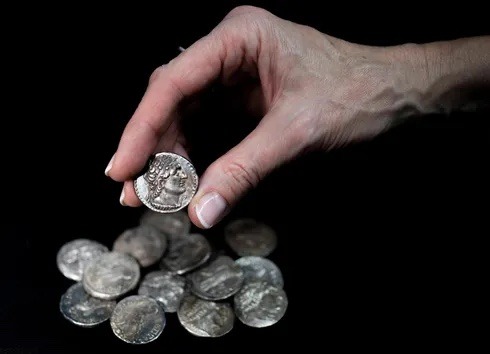
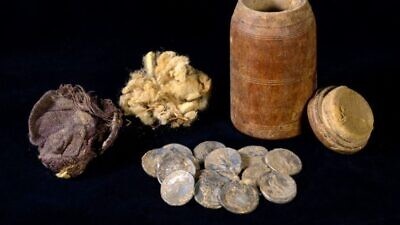
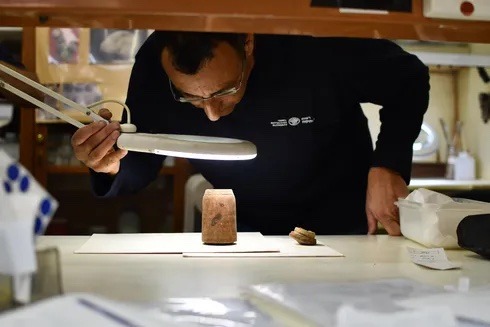

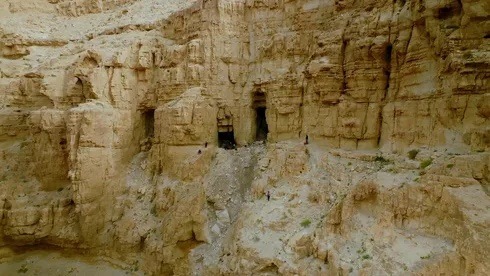
A 2,200-year-old Silver Coin Hoard Found at Desert Cave in Israel
Hidden under a swatch of purple, coins found in a Dead Sea cave weren’t from the Bar Kochba period but from Hasmonean era centuries earlier.
Roughly 2,200 years ago, somebody hid a wooden box with 15 silver coins in a cave in the Judaea Desert. The box would lie moldering in the crack into which it had been shoved until earlier this year, when it was found by archaeologists with the Israel Antiquities Authority carrying out surveys.
The find was made in Muraba’at Cave, now part of the Nahal Darga Nature Reserve by the Dead Sea (some call it the Wadi Darageh). The cave had famously sheltered Jews fleeing the Romans at the end of the ill-fated Bar Kochba revolt that began in 132 C.E. But these newly unearthed coins are the first solid evidence of people using the cave to hide centuries earlier, at the end of the Hasmonean period, the Israel Antiquities Authority says.
This season’s excavations in the cave, in the framework of the Judean Desert Excavation and Survey Project, began last March. The cave is a big one, about 100 meters (nearly 330 feet) deep, and archaeology is a painstaking profession, so the team “had been digging for almost two months when we found the treasure in May,” says the IAA’s Eitan Klein.
The excavation process involves gingerly and meticulously removing layers while keeping a sharp eye out for finds, he explains – and one can’t think of the cave like a room, with smooth walls and corners. It’s a convoluted, craggy, jagged place and at some point, excavating a previously unexplored spot, as they removed dirt from a crack – there it was, he says.
A moment of purple
The container was made of wood turned on a lathe, and though rare – if only because most wooden boxes from that period would long have returned to dust – such items aren’t unknown, Klein says. “A box like this was found in Ein Gedi, for instance, but it wasn’t as beautifully finished. Here and there, they do show up. But because they’re organic, only ones left in the deserts have survived.”
Okay. Having extracted the ancient box from the dirt filling the crack, the archaeologists prised off its lid – and were greeted by the sight of more dirt, with some small pebbles. So far, not the stuff of thrillers.
But below the dirt was a piece of woolen cloth dyed purple. Was it – could it have been – dyed with the royal purple, the precious dye extracted from the shell of the unfortunate Murex snail? Samples of textiles dyed with real purple, which is associated with the 1 percenters of biblical times, have been found in Timna (the ancient copper mine in the Negev anecdotally associated with King Solomon), from a thousand years before this box entered the world.
However, it cannot be said that this textile in the lathe-carved wooden container was that same precious royal purple because it remains to be analyzed, Klein says.
Anyway, below it, nestled lovingly in a clump of sheep’s wool, were the 15 coins. Before analysis, the coins had to be cleaned: they corrode after 2,200 years in a box, Klein notes. The coins were analyzed by Klein together with numismatist Gabriela Bijovsky.
As said, Muraba’at was known to have sheltered Jews fleeing from the Romans when the Bar Kochba revolt failed in 136 C.E. But once the coins were restored to their shiny original condition, the team was in for a shock. “Often, ancient coins bear inscriptions and symbols that help date them,” Klein says. These did – and, lo, they predated Bar Kochba by centuries.
All were silver tetradrachma minted by Ptolemy VI, king of Egypt. Three had been manufactured in 176-175 B.C.E., and the latest one was dated to 171-170 B.C.E., which is associated with the onset of the Maccabean Revolt following anti-Jewish decrees issued by the Seleucid emperor Antiochus IV Epiphanes.
Egypt had ruled Judea for a time many centuries earlier, but certainly not when these coins were minted. When Ptolemy VI reigned over Egypt, the Seleucid kingdom, including Judea, was under the scepter of his uncle Antiochus IV Epiphanes (aka “the Wicked”).
The name “Shalmai” in Aramaic script was found secondarily incised on one of the coins, the IAA says.
And thus, we have actual evidence of rebels fleeing to the Negev as the struggle between the Hellenistic regime and the Hasmoneans wound down. No evidence of that whatsoever has been found until now, Klein spells out, so the discovery was quite the surprise. “I was sure they’d be Bar Kochba coins,” he says.
Apropos, the contents of the box may seem bewildering: precious silver coins wrapped in wool, covered by purple textile no less, then dirt. Klein is not bewildered. For one thing, all that padding – which is what it boils down to – would protect the coins. Chiefly, though, Klein surmises that the owner was in flight and didn’t want his stash to rattle in the box.
That theory would also fit with the manner in which the treasure was hidden, and we can even speculate as to the fate of its owner – because they were still there after 2,200 years.
“It says in the Book of Maccabees that Jews fled to the desert, and now we have proven it true,” says Klein. “This is an absolutely unique find.”
Maybe that is why the coins were still there, found with other stuff from times of yore – including fragments of rope and textiles, other coins that may be from the Bar Kochba period and even tiny fragments of scrolls, Klein reveals.
When the dig of the cave resumes later this month, they hope to find even more. However, it will be hard to beat some of the other artifacts found during the surveys in the desert. These include a large basket gorgeously weaved over 10,000 years ago, which, like the wooden box, survived thanks to having been abandoned in one of the drier places on Earth.
By Ruth Schuster.
#A 2200-year-old Silver Coin Hoard Found at Desert Cave in Israel#dead sea cave#dead sea#judaea desert#muraba’at cave#bar kochba revolt#hasmonean period#ptolemy vi#coins#coin hoard#collectable coins#silver coins#treasure#ancient artifacts#archeology#archeolgst#history#history news#ancient history#ancient culture#ancient civilizations#ancient israel#long reads
21 notes
·
View notes
Photo
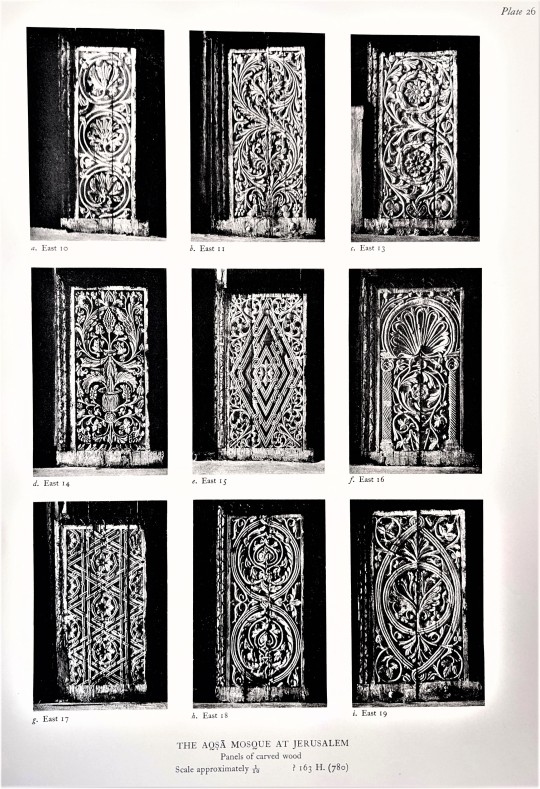
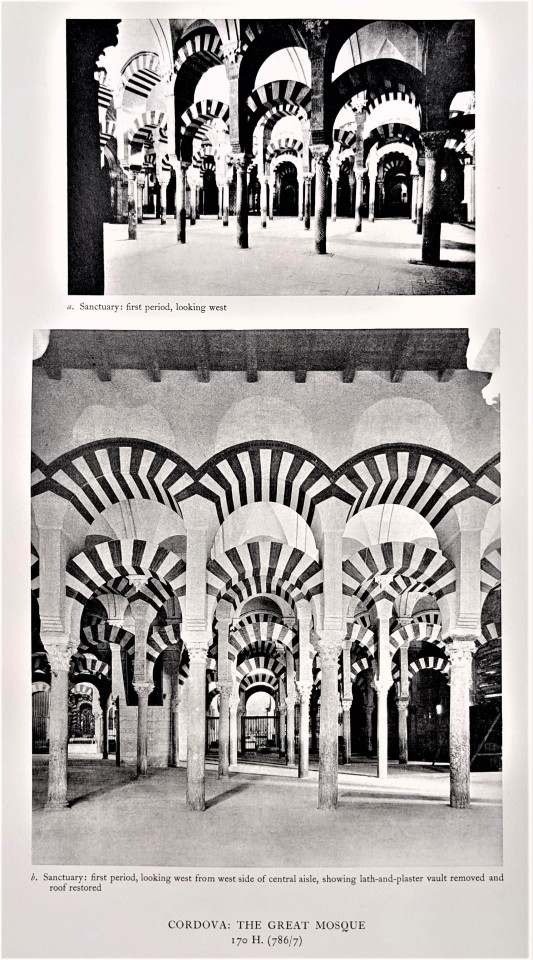
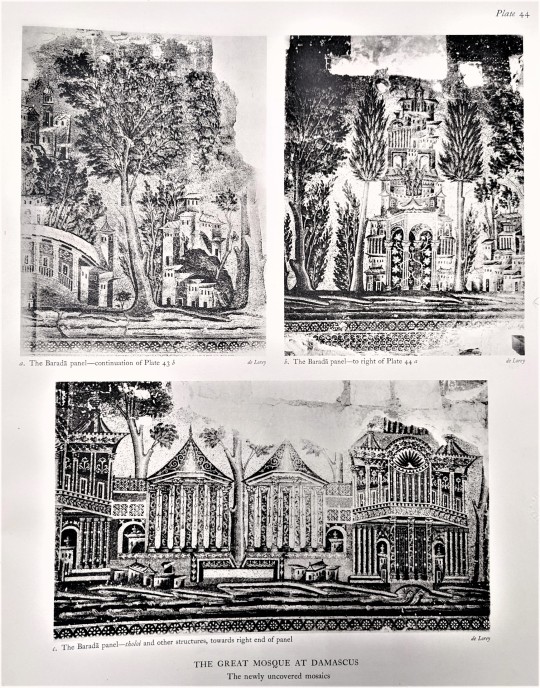
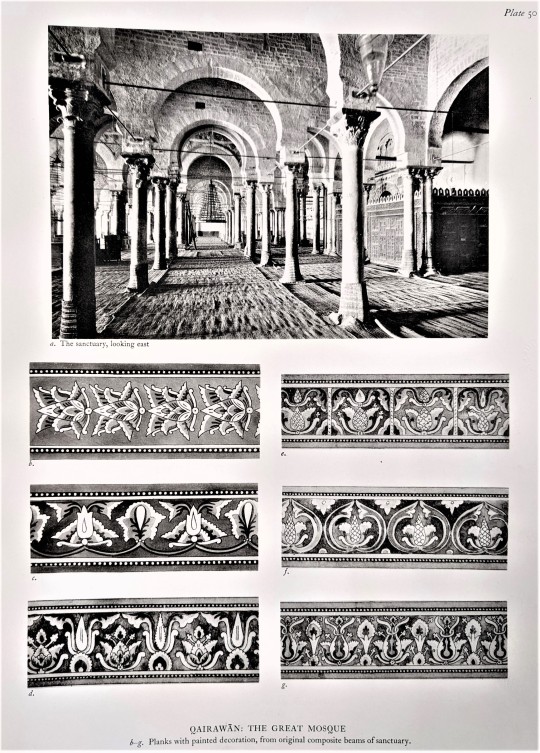
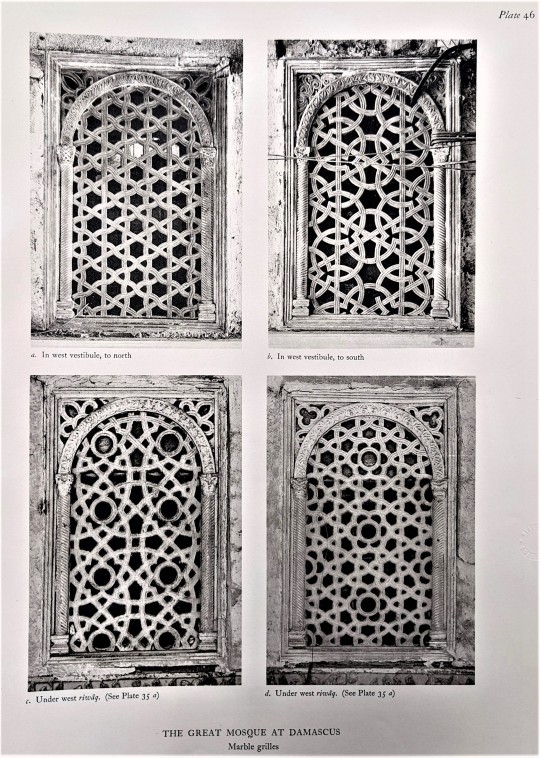

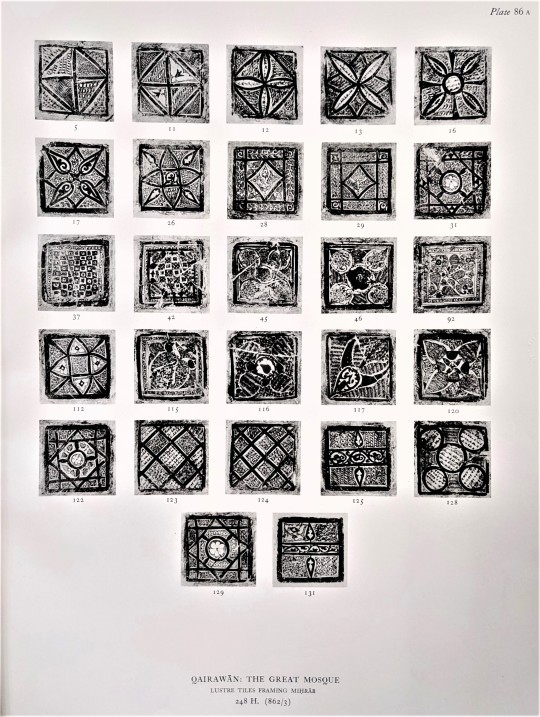

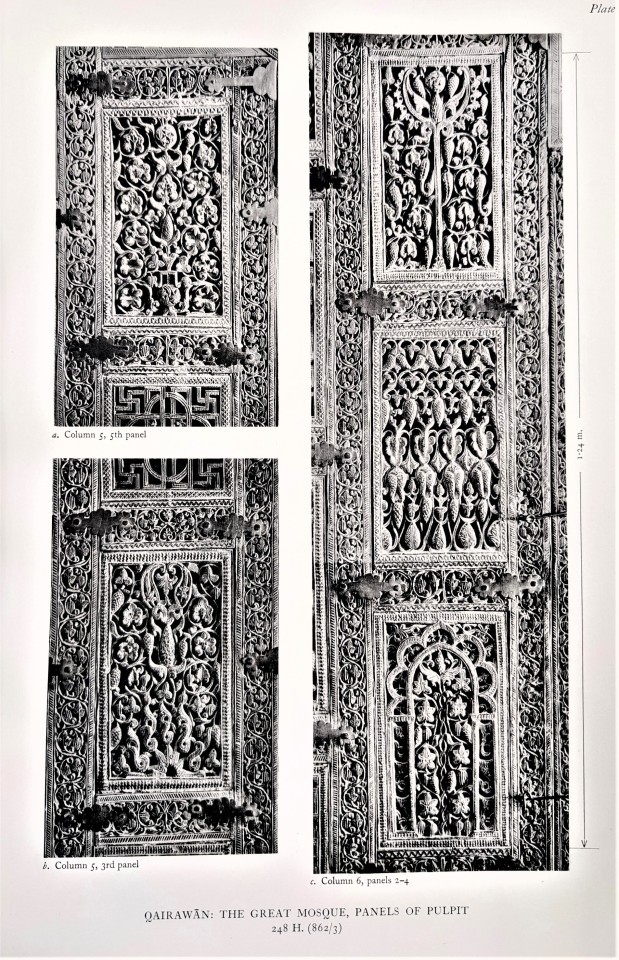
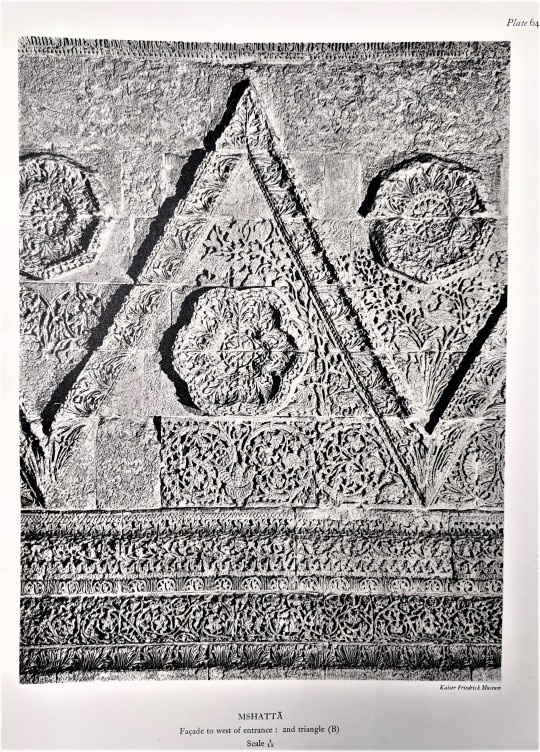
Decorative Sunday
For this decorative Sunday we present plates from English architectural historian K.A.C. Creswell’s two-volume Early Muslim Architecture. The first volume was published in 1932 and covers the Umayyads (C.E. 622-750). The second volume was published in 1940 and covers the early Abbāsids and Ṭūlūnids from the time of the Abbāsid Revolution until the restoration of Ṭūlūnid territory to Abbāsidian control (C.E. 751-905). Also covered in the second volume are the Umayyads in their exile in Córdoba.
Both volumes were printed by The Clarendon Press by John Johnson, printer for Oxford University. The Oxford University Press came to be known as the Clarendon Press after the press moved from its original location in the Sheldonian Theatre to the Clarendon Building in 1713. In the early twentieth century, Oxford began publishing some books through its London office, and The Clarendon Press moniker was used to differentiate between Oxford and London publications. Today, Oxford publications deemed of particular academic importance will bear the Clarendon Press imprint.
Keppel Archibald Cameron Creswell was an architectural historian and professor of Islamic Art and Architecture at Fuad University (now Cairo University) and later at American University in Cairo. He also collected an extensive private collection on Islamic Architecture, with over 3000 volumes and 11000 photographic prints. After being urged to return to England following the Suez Crisis in 1956, Creswell resolved to stay in Egypt, largely because his library could not be exported.
The first volume is dedicated to the enthusiastic patron of the project, King Fuad I. Fuad died in 1936 and the second volume is dedicated to his son and successor, King Farouk I. Volume one was printed in an edition of 500 copies, of which ours is number 175. Each volume features hundreds of line and half-tone illustrations incorporated into the text, was well as many full plates located at the back of the volume (81 in vol. 1 and 123 in vol. 2).
You can view more of our Decorative Sunday Posts here.
-Olivia, Special Collections Graduate Intern
#decorative sunday#decorative plates#early muslim architecture#islamic art#islamic architecture#k.a.c. cresswell#Clarendon Press#oxford university press#fuad I#decorative arts#mosaic#cordova#damascus#dome of the rock#al aqsa#mshatta#Olivia
109 notes
·
View notes